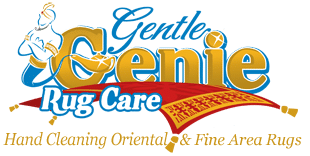Oriental Rug Care Tips To Protect the Rugs you Love
Vacuuming
Vacuuming is one of the best ways to keep a rug looking nice in between professional cleaning. Keep in mind that rugs do not wear out at the surface they wear out at the foundation. In many homes, people wear the same shoes on their fine rugs as they wear outside. Sand, grit, abrasives, and even broken glass can sick to the soles of shoes and then get tracked onto and into the rugs. Industry studies show that a rug can hold up to a pound per square foot of dry particulate matter before looking “dirty.”
Protect the Fringe
Don’t use a beater bar vacuum on the fringe. The fringe is the foundation of the rug and vacuuming the fringe shortens the life of the rug. Never let your Rug Cleaner use chlorine bleach on the fringe; don’t trust a cleaner who uses chlorine on wool, silk or cotton. Beware of “Tub Cleaners”; many cleaners wash rugs in large tanks to which they add Dichlor to the bath. Dichlor turns to chlorine in the bath water and is bad in the long term for wool, silk, and cotton.
Rotate Your Rugs
Turning your rug to equalize wear prolongs the life of the rug. If it is a large Rug, have your Rug Cleaner turn the rug when you have it cleaned. The effects of foot traffic and sun fading are minimized when the rug is rotated annually.
Use A Good Rug Pad
By using a good quality rug pad the rug will not wear out as quickly. A good pad will keep the rug from shifting and wrinkling as much. A wrinkle caused by creeping and shifting is a safety hazard and the cost of a good pad is nothing compared to the liability of a bad fall. The Academy of Oriental Rugs recommends a quality pad such as those made by No-Muv and Jade Industries.
Spills
Never let a spill sit; it only gets worse. Never smear a spill, instead scrape it gently with a spatula, spoon, or paint scraper. When dealing with liquid spills, blot area with a cloth or paper towels. Be very careful as not to spread the spill any wider. Caution: Supermarket spot removers are made for man made fibers and can severely damage wool and silk. “Oxy” anything is a bleach and will remove color. Most spots can be cleaned, but loss of color from bleaching is a far more serious issue.
Protect Your Rugs from Water
Letting a rug stay wet for too long can lead to dry rot, mold, and mildew. Many people put potted plants on rugs and we regularly see the need for expensive repairs from plants. Never place a live potted plant on your fine Oriental rug or area rug. No matter how careful you are when watering, moisture from the bottom of the pot or saucer can migrate into your carpet and can cause mildew or prematurely rot the fibers in your rug.
No matter how the rug gets wet, dry rot is a threat if not dried promptly. If your rug were to get wet from an open window and an unexpected storm, blot up any water you can and then put a fan on it.
Pet Urine
Treat urine as spills. Once you blot up what you can, use a wet sponge to re-wet and continue blotting. Wool rugs are normally slightly acidic and pet urine is acidic when it is fresh. But after about five days the urine turns to increasingly alkaline and alkalinity can damage the rug’s ability to hold color. Even after cleaning, what some people think is a urine stain, is actually an area of color loss. Get the rug washed when it needs it and take it to someone experienced in preventing color loss.
Moth and Pest Care
Moth larvae and other pests can cause thousands of dollars in repair bills or even destroy your wool rug. A clean rug is far less likely to be damaged and a good rug washer can treat your rug to make it inedible to moth larvae and other pests.
